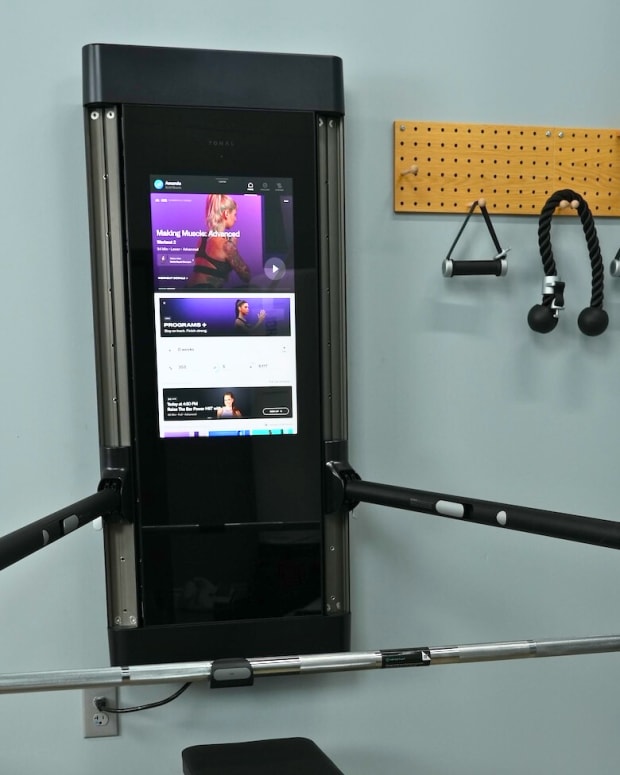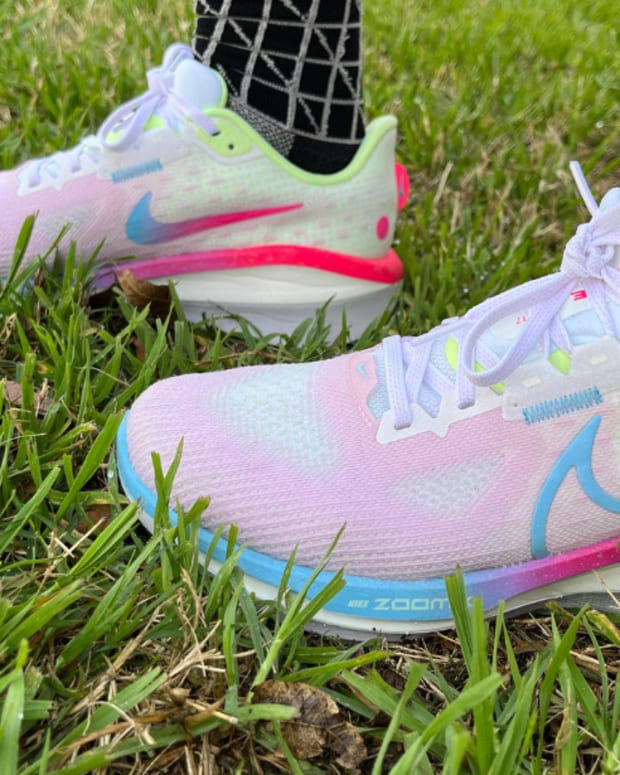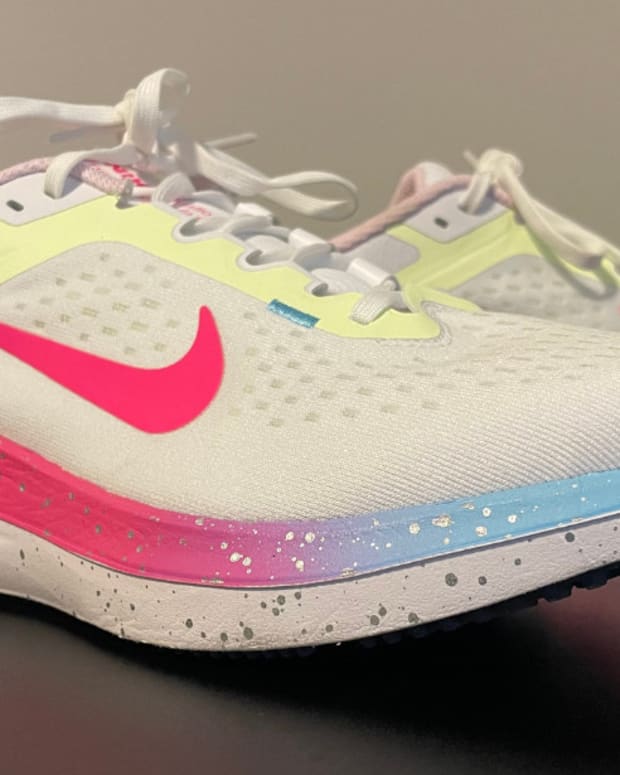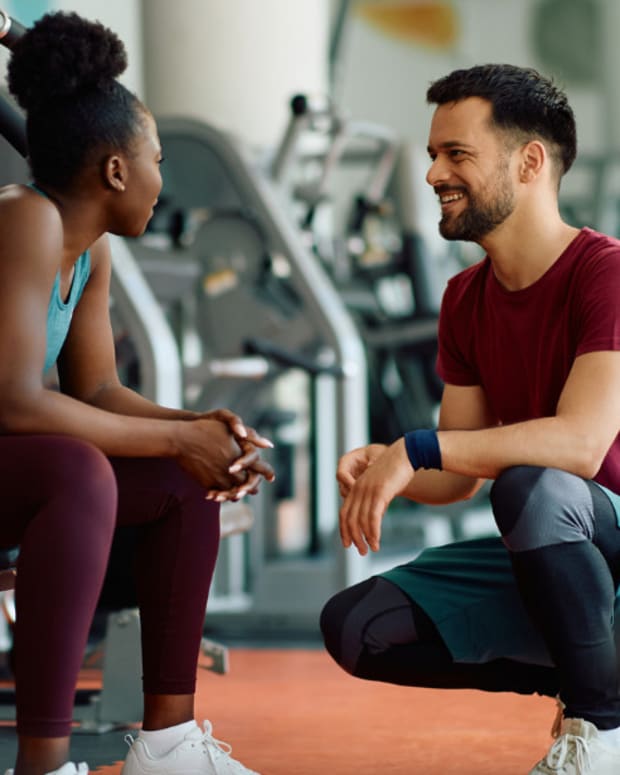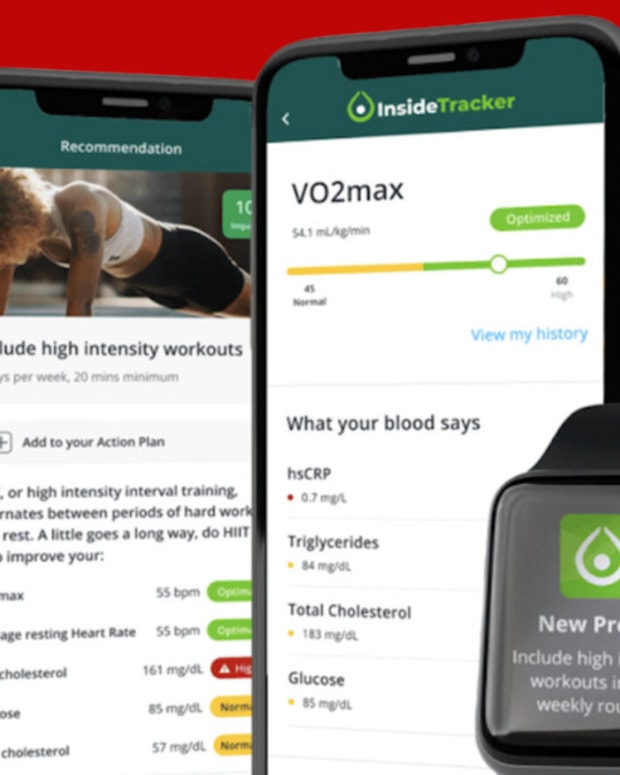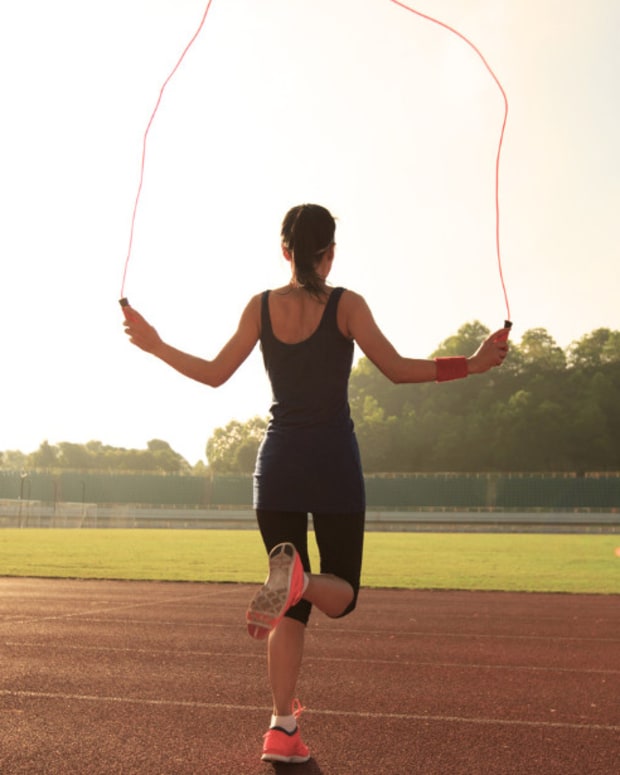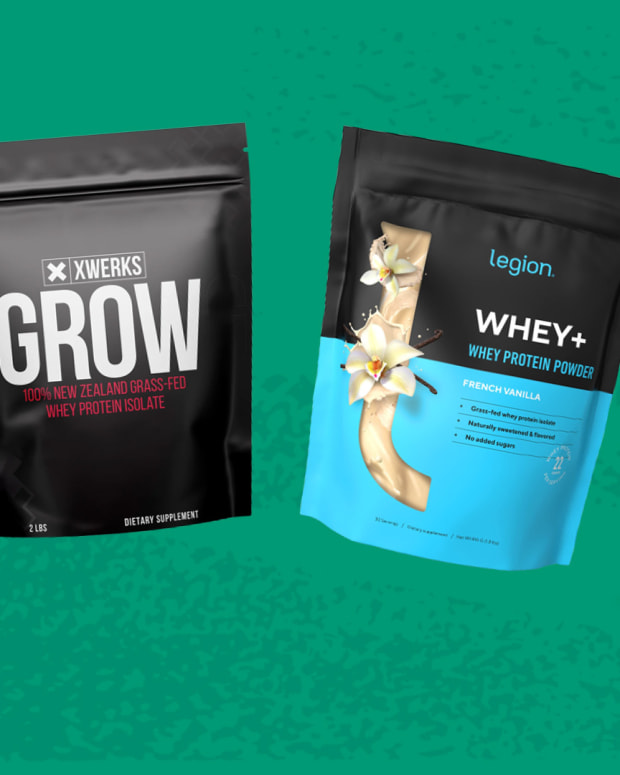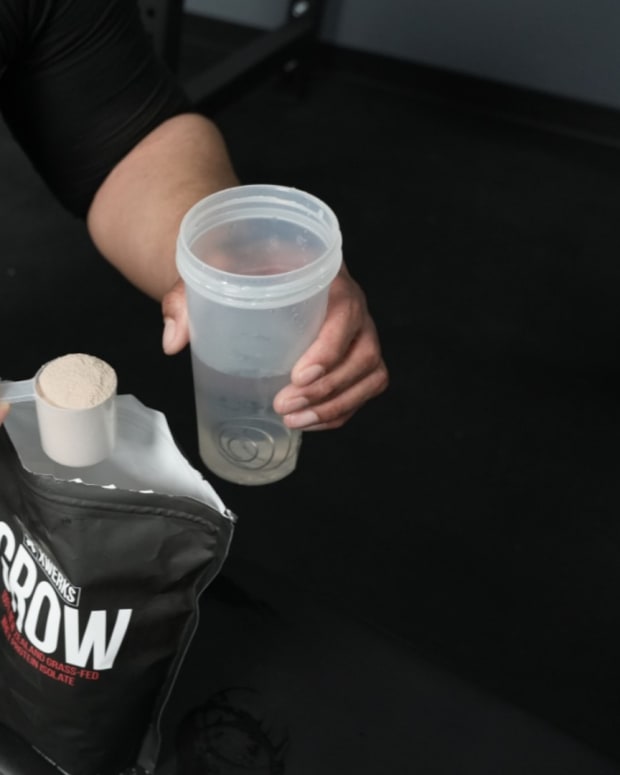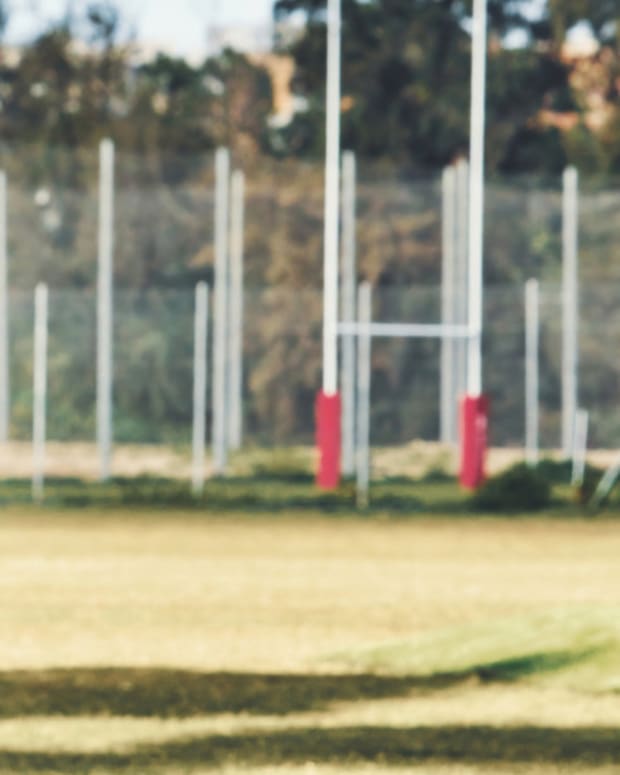The products featured in this article have been independently reviewed. When you buy something through the retail links on this page, we may earn commission at no cost to you, the reader. Sports Illustrated editorial staff are not involved in the creation of this content. Learn more here.
Memory foam shoes are shoes with insoles or midsoles constructed from memory foam, a material made from a polymer called polyurethane. Other chemicals are then added to impart the characteristic elastic properties that make memory foam so springy. The material adapts to the shape of your foot as it heats up, providing excellent support, cushioning, stability and shock absorption.
From running shoes to walking shoes, memory foam technology can enhance comfort and improve performance, making them a popular choice for athletes and occupational workers who are on their feet most of the day. However, with the increasing popularity of using memory foam components in various structural components in footwear, it can be difficult to find the right memory foam shoes for your needs. In this buying guide, we discuss the benefits of wearing memory foam shoes and share our top picks for the best memory foam footwear for all your different needs in 2024.
Our Picks for the Best Memory Foam Shoes of 2024:
- Best Overall Memory Foam Shoes: Skechers GOrun Razor Excess 4
- Best Memory Foam Shoes for Standing All Day: adidas Cloudfoam Sneakers
- Best Memory Foam Shoes for Work: Hoka Bondi SR
- Best Memory Foam Walking Shoes: Brooks Ghost 15
- Best Memory Foam Shoes for Men: Reebok Classic Nylon
- Best Memory Foam Shoes for Women: New Balance NB Nergize Sport
- Best Memory Foam Sandals: Under Armour UA Ignite Pro
- Best Memory Foam Running Shoes: Saucony Kinvara 14
Best Overall Memory Foam Shoes: Skechers GOrun Razor Excess 4
Key features:
- Weight: 6.3 ounces
- Material: Mesh upper and Hyperburst Pro midsole
- Width option: Standard Best for: Running, walking, gym workouts, lifestyle
Our pick for the best memory foam shoes overall are the Skechers GOrun Razor 4 running shoes. These ultra-cushioned, extremely lightweight training shoes are ideal for runners, walkers and everyday gym goers alike.
For example, there are Goodyear Rubber outsoles for unbeatable traction, stability and durability, even if you are an intrepid runner who puts in the miles when it’s pouring rain, sleeting or snowy outside. The breathable hyper-mono mesh upper stretches and clings to your foot for a more intimate, controlled feel while regulating your temperature to prevent your feet from overheating.
For improved foot support and stability, these memory foam shoes feature Skechers Arch Fit insoles, a podiatrist-certified anatomically-molded insole that provides the biomechanical support you would expect from custom orthotics in a lightweight, flexible, removable insole. These insoles make this a good shoe for those with flat feet to help prevent overpronation.
To improve running economy and improve the efficiency and comfort of your stride, there is Hyper ARC technology in the midsole and a carbon-infused forefoot plate to maximize energy return and spring in your step at push-off.
Related Post: The Best Long Distance Running Shoes
Finally, and perhaps most importantly, in terms of the memory foam cushioning, the Skechers GOrun Razor 4 uses the hyper burst cushioning, which is premium cushioning designed to provide unparalleled shock absorption and pressure dispersion for miles and miles of comfortable wear.
Pros:
- Extremely lightweight
- Very responsive and smooth transition from heel to toe
- Plush, springy softness due to hyper burst cushioning
Cons:
- Runs a little narrow
- No wide options
Best Memory Foam Shoes for Standing All Day: adidas Cloudfoam Sneakers
Key features:
- Weight: 4.0 ounces
- Material: 50 percent recycled upper, rubber outsole, memory foam sockliner to help prevent blisters
- Width options: Standard (B for women)
- Best for: Lifestyle, standing, walking
If you’re going to be standing all day, memory foam shoes can be the savior you need to prevent achy feet and legs. The adidas Cloudfoam Pure 2.0 Running Shoes are true to the name with a Cloudfoam midsole and outsole for shock-absorbing relief and a springy bounce. At a mere 4 ounces, these shoes are light and airy like clouds. There’s a soft memory foam sock liner for added comfort.
These retro-looking shoes offer a modern feel. Plus, the upper features 50 percent recycled materials, so you can feel good about the sustainability of your comfy kicks.
Pros:
- Extremely lightweight
- 50 percent recycled materials in the upper
- Soft, yet supportive
- Lots of colors to choose from
Cons:
- Not for athletic activities
- Slip-on sneakers might not be supportive enough for some people
Best Memory Foam Shoes for Work: Hoka Bondi SR
Key features:
- Weight: 11.5 ounces
- Material: Water-resistant leather, mesh, EVA midsole
- Width options: Standard and wide widths for men and women
- Best for: Occupational use, workplace wear, standing all day, walking
Hoka is well known for making high-quality maximalist running shoes, which are said to impart cloud-like cushioning and marshmallow softness. The Hoka Bondi SR takes that said unprecedented cushioning used in the running shoes and applies it to a shoe intended for everyday wear or occupations that require long hours on your feet.
Featuring a water-resistant leather, a slip-resistant outsole and a high-quality, compression-molded EVA midsole to ensure all-day cushion, this Hoka shoe is designed to be as hardworking as you are. The ultra-grippy, anti-slip outsole provides full ground contact rubber to make sure you are safe and stable in any workplace environment.
This work shoe features an early stage meta-rocker sole to facilitate easy heel-to-toe transitions for a smooth gait. There is a memory foam collar contours and cradles your midfoot and ankle for improved comfort and fit, helping you stay stable and supported on your feet while reducing fatigue in your legs.
The Hoka Bondi SR has earned the American Podiatric Medical Association (APMA) Seal of Acceptance, a designation that recognizes products that have been found beneficial to foot health as determined by a group of APMA podiatrists. Therefore, if you wear orthotics or have any sort of chronic or acute foot condition, you can feel confident that these shoes are one step you can take towards better foot health.
Overall, it’s a reliable, supportive shoe with incredible shock absorption and comfort.
Pros:
- Very well cushioned
- Great for long hours on your feet
- Meta-rocker sole for smooth transitions
- APMA-approved shoe
Cons:
- Heavier
- Fewer color options
- Hard to find on Amazon
Best Memory Foam Walking Shoes: Brooks Ghost 15 Men’s
Key features
- Weight: 10.1 ounces
- Material: Mesh upper with 30 percent recycled content from plastic water bottles
- Width options: Standard and wide in certain colors
- Best for: Running and walking
The Brooks Ghost 15 is technically a running shoe—and a fantastic one that—but it also earns our pick for the best walking shoe for men. Most sneakers that are specifically designed to be walking shoes are bulky, heavy and lack a lot of the latest athletic shoe technology in terms of materials and design, and memory foam walking shoes are no exception.
Therefore, although we also highly recommend the Brooks Ghost 15 for runners, it’s also a clear winner for walkers, especially if you walk long distances or at a brisk pace (power walking).
With the Ghost 15s, your foot is cradled in a soft and flexible yet supportive insole and sole that moves seamlessly with your foot as you run and walk as if one with your body. This is especially helpful for people with plantar fasciitis, arthritis, stiffness in the big toe or heel or arch pain because there are no major pressure points that build up—the shoe distributes pressure evenly as you walk or run, which helps reduce stress on sore areas of your foot.
The Brooks Ghost has a slightly wider toe box than most running shoe brands, so the shoe helps accommodate natural foot splay when you run or walk. This makes the Ghost 15s are a particularly good option for runners or walkers with wide feet, bunions, metatarsalgia or a square-shaped forefoot rather than a tapered one.
Brooks uses a variety of foams for cushioning running shoes but the Ghost 15 uses 100 percent DNA LOFT v2. This foam is made from a composite of EVA foam, rubber, air and is designed to provide maximal shock absorption and cushioning. It’s squishy like a memory foam mattress, while simultaneously providing durable support and being ultra lightweight.
The Ghost 15 comes in tons of colors for both women and men and is available in standard and wide widths, giving you lots of options to match your style and get the best fit.
One final perk of the Brooks Ghost—it’s a carbon-neutral running shoe made with recycled materials in the upper knit portion of the shoe, such as water bottles pulled from landfills. The upper knit part of the shoe features 3D Fit Print, which strikes a balance of providing stretch and structure so the shoe hugs your foot in just the right way.
Pros:
- Exceedingly well designed and comfortable shoes
- Smooth transitions
- Great for walking and running
- Narrow and wide widths
- Carbon neutral shoe
Cons:
- Wider toe box is great for foot splay but may be wide for those with narrow feet
- Slightly heavier
Best Memory Foam Shoes for Men: Reebok Classic Nylon
Key features:
- Weight: 11 ounces
- Material: Nylon and suede upper for comfort and durability
- Width options: Standard (D)
- Best for: Lifestyle, athleisure
Classics are classics for a reason—they’ve stood the test of time. The Reebok Men’s Classic Nylon is the newest version of the original Classic Nylon, the Reebok lifestyle shoe that debuted in 1991. Today’s version features all the stylish, retro curb appeal of the fan favorite training shoe but with a supple EVA foam midsole that is soft and springy with the latest materials technology.
These everyday shoes feature a suede and nylon upper designed to give a clean, classic, minimalist look while providing comfort and durability. Adding to the comfort and cushioning of the memory foam insoles is a padded foam sock liner, and the durable rubber outsole is abrasion-resistant for long-lasting, reliable traction.
Overall, this Reebok shoe is great if you’re looking for a comfortable, stylish, memory foam lifestyle shoe.
Pros:
- Attractive, sporty and sleek
- Comfortable shoes
- Responsive rubber outsole
Cons:
- Not particularly breathable
- Not ideal for athletic activities
- A little heavy
Best Memory Foam Shoes for Women: New Balance NB Nergize Sport
Key features:
- Weight: 5.2 ounces
- Material: Mesh upper, REVlite midsole
- Width options: Standard (B)
- Best for: Lifestyle, athleisure
For everyday memory foam lifestyle shoes for women, we like the New Balance NB Nergize Sport. These shoes are impressively comfortable due to the NB Memory Sole Comfort Insert with memory foam cushioning and the REVlite midsole.
The combination of the memory foam insole and the proprietary fresh foam midsole construction makes for a super lightweight, cushioned footbed. It’s certainly reminiscent of a memory foam mattress miniaturized to fit into the footbed of the sneaker.
The mesh upper is breathable, featherlight and popping with color for snazzy eye appeal. The rubber outsole is durable and abrasion resistant yet responsive and the slip-on shoe design makes for ready-to-go wear.
Pros:
- Lightweight fresh foam and memory foam
- Easy, slip-on design
- Comfortable
- Affordable
Cons:
- Slip-on sneakers may not work well with orthotics
- Less durable over time
- No wide widths
Best Memory Foam Sandals: Under Armour UA Ignite Pro
Key features:
- Weight: Not listed
- Material: Synthetic with memory foam footbed
- Width options: Standard
- Best for: Post-workout recovery, swim workouts,gym locker rooms
There’s a lot of focus on the importance of getting proper footwear for your workout. Whether you’re a runner, walker or weightlifter, it’s crucial to have cushioned, supportive footwear that feels comfortable and helps you move effectively during your workouts.
However, what you wear on your feet after your workout can also significantly impact not only how your feet and legs feel in the moment, but also how well you recover and rebound before your next workout. Wearing recovery footwear, such as memory foam athletic sandals, can allow your feet to relax and move in their natural positions and patterns. This can eliminate pressure on your feet and ease muscle tension in your feet, ankles and legs.
Our pick for the best memory foam sandals are the Under Armour Men’s UA Ignite Pro. These memory foam sandals essentially combine the plushy feel you would expect from a comfy pair of slippers with the supportive body you would expect from a well-made sneaker.
The footbed itself mimics the shape of your foot. This molding helps support your foot in the proper position while still permitting natural freedom of movement. The strap that goes across the top of your foot has a soft foam underneath for added comfort.
Finally, these memory foam recovery sandals feature a re-engineered EVA outsole constructed with durable traction pods in the heel to provide extra shock absorption without adding appreciable weight to the lightweight body of the sandal.
Pros:
- Memory foam cushioned foot bed
- Comfy strap
- Lightweight
- Anti-slip grip provides much better traction than flip flops
Cons:
- Doesn’t come in wide widths
- May not stay on as well as a flip flop for some people
- Limited control for overpronation
Best Memory Foam Running Shoes: Saucony Kinvara 14
Key features:
- Weight: 7 ounces
- Material: Synthetic and mesh, PWRRUN cushioning
- Width options: Standard
- Best for: Competitive and recreational runners
Saucony is well known for making high-quality running shoes designed for serious runners. The Saucony Kinvara 14 is no exception, as it is an ultra lightweight running shoe that will support all your fast training runs and races while lasting for 400–500 miles of running adventures.
This running shoe is designed to be a speedy trainer, with a lightweight knit upper that contours your foot for an intimate, comfortable feel.
Compared to other memory foam running shoes, the Saucony’s PwrrunRUN cushioning in the Kinvara is exceedingly responsive, lightweight and springy while still retaining the plushness you expect with memory foam.
This makes it a great memory foam running shoe for not only recreational runners who deal with some type of foot or leg soreness and need the extra cushioning of memory foam, but also more competitive runners and high-mileage runners who still want a high-performing, responsive midsole that provides energy return during each stride for optimal performance and running economy. In this way, this running shoe is comfort meets performance in one.
At 7 ounces for men, this running shoe has nearly the weight and feel of a speedy racing flat yet you get the memory foam cushioning and foot support of a solid training shoe.
Another nice feature of these memories from running shoes is that they feature a lower heel-to-toe drop than most running shoes. The heel-to-toe drop refers to the difference in the thickness or height of the heel relative to the forefoot.
Most standard running shoes have a fairly heel-to-toe drop of 10-12mm or so, but these Saucony running shoes have a heel-to-toe drop of 4 mm.
A lower heel-to-drop can better mimic natural running and may reduce the tendency to heel strike. The risk of running injuries is typically higher in heel strikers and overstriders, so a lower heel drop can potentially support a more natural gait and midfoot foot strike landing pattern, while also requiring more muscle activation and stretching in the calves and Achilles’ tendon.
Lastly, the flexible outsole allows for a super smooth transition from heel to toe as you land and then push off for the next stride. You’ll feel fast and free yet cushioned and comfortable.
Pros:
- Tons of colors
- Extremely lightweight for a running shoe
- Super responsive memory foam
- Low heel drop
Cons:
- Can take a little adjusting to get used to lower heel-to-toe drop
- Narrow toe box
What Are the Benefits of Wearing Memory Foam Shoes?
There are quite a few benefits of memory foam shoes.
Memory foam was originally created by NASA to provide maximal shock absorption for the seats in spacecraft. Much like a memory foam mattress, memory foam shoes absorb and dissipate pressure, which can alleviate stress and discomfort on your feet and legs.
Despite more nuanced differences in the characteristics and qualities of any two memory foam sneakers, all memory foam footwear will have well-cushioned insoles that contour to your feet. As your body heat is transferred to the memory foam, the material softens and becomes more pliable and fluid, almost like a plasma. This allows the memory foam to mold and adapt to your unique foot shape, intimately cradling every contour in a way that regular EVA foam insoles cannot.
This often makes memory foam shoes feel more comfortable and cushioned, and can help disperse shock and impact forces more effectively because the entire insole is in contact with your foot, rather than only in the ball of the foot and heel, with gaps in between. The improved contact also reduces heel slippage and blisters.
It also helps increase the arch support because there is increased contact area between the sole of your foot and the memory foam insole. Additionally, because memory foam molds to your unique foot shape as your body heat is transferred to the polyurethane insole, the full-contact footbed provides superior stability for better balance and control of your feet in the shoe.
How to Select the Perfect Pair of Memory Foam Shoes
When you are buying memory foam shoes, you should consider the typical factors that you would weigh for any type of footwear, such as the type of shoe, the fit of the shoe, the materials and construction and the intended uses of the shoe.
In terms of the factors that are important with memory foam shoes in particular, the main thing to consider is the breathability of the shoe. Memory foam tends to retain heat and it is not particularly breathable. Therefore, if you are buying memory foam running shoes or memory foam shoes for gym workouts, look for athletic shoes that have a highly breathable mesh upper to help regulate temperature and release heat.
The other factor to consider is whether the memory foam insole is compatible with your orthotics.
If you have a custom insole that you need to wear in your shoes to support your foot, you may have to remove the memory foam insole all together, negating the benefits of having one. Certain memory foam shoes have the material incorporated into the sock liner or they have a midsole made of memory foam, so you will still be able to remove whatever insole is in there and use your own orthotics while retaining the memory foam benefits of the shoe.
Above all, choose a pair of shoes that feels comfortable and properly supports your feet. If you’re going to buy shoes on Amazon or other online retailers without trying them, it’s a good idea to research and read reviews before you take the plunge to make sure the shoes sound like they will meet your needs.
Who Are Memory Foam Shoes Best Suited For?
Memory foam shoes are suitable for all types of users, from high mileage runners to everyday athletes, to fitness walkers and occupational wearers. They can be great for people who are overweight or deal with chronic foot or leg pain, such as arthritis, knee pain, plantar fasciitis or pain in the ball of the knee.
Are All Memory Foam Shoes Created Equal?
Memory foam isn’t a standardized material, so the formulations can vary from one product to the next, which is why certain memory foam shoes may feel softer or squishier while others might feel denser and firmer.
Cheap memory foam insoles are not much different than basic foams, so the shoes often over promise and under deliver. On the other hand, premium memory foams use different chemicals blended with the polyurethane base to impart superior elasticity and rebound to the material. Higher-quality memory foam sneakers will also have thicker or multiple layers of memory foam to enhance the benefits of the material.
Memory Foam Shoe FAQs
Are memory foam shoes good for foot pain?
Depending on the nature and etiology of your foot pain, memory foam shoes tend to be a great option for people who deal with acute or chronic foot pain.
Because memory foam insoles mold to the anatomical contours of your feet, memory foam shoes help distribute pressures evenly across the entire foot, minimizing pressure (and subsequent pain) along any specific tissue.
Memory foam also helps absorb shock, which reduces stress on the bones and joints of your feet.
If you have a foot injury or flat feet, look for memory foam shoes that are approved by the American Podiatric Medical Association (APMA), such as the Skechers GOwalk or GOrun series, Brooks running shoes and Hoka footwear.
Can memory foam shoes cause back pain?
Memory foam shoes should not cause back pain as long as the shoe fits your foot properly and supports your arch.
Are memory foam shoes good for running and walking?
Memory foam shoes are good for walking and running. They support the foot and cushion your impact while providing flexibility and rebound for a smooth, efficient stride.
The shock-absorbing nature of memory foam helps reduce impact forces when you land. This is particularly important during running, as your feet and legs are subjected to forces approximately two to three times your bodyweight when you run and nearly two times your bodyweight when you walk.
Studies have found that highly-cushioned running shoes can reduce joint impact stresses and muscle soreness after running.
How long before memory foam shoes begin to wear out?
The durability of memory foam shoes depends on numerous factors such as the type of shoes you are buying (running, walking, cross training shoes, etc.), the quality of the shoe (premium vs. budget memory foam shoes), how much you wear the shoes and for what activities. Additional factors include your body weight and the biomechanics of how you walk, too.
Most memory foam running or walking shoes last 300-500 miles or about six months for heavy wear and up to a year for lighter use.
Final Thoughts
Whether you stand on your feet all day, take your dog on long walks or are a serious runner putting in some heavy mileage, wearing memory foam shoes can potentially provide the comfort, cushioning, pressure relief and shock absorption you need for pain free time on your feet.
Buying the best memory foam shoes for your needs will support the anatomical contours of your foot and give you the spring in your step and energy return you need to feel fresh and light on your feet.
Prices are accurate and items in stock as of publish time.









